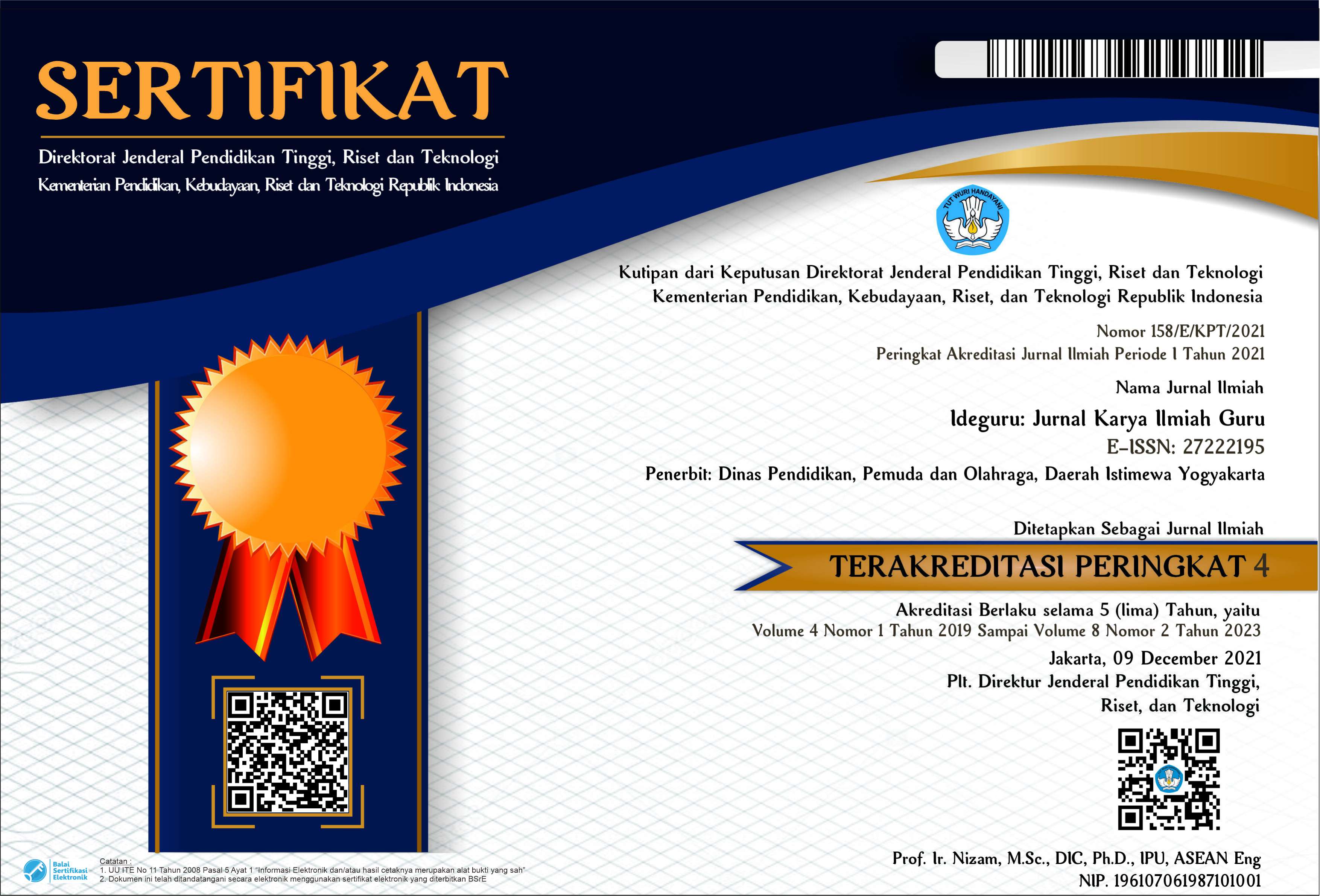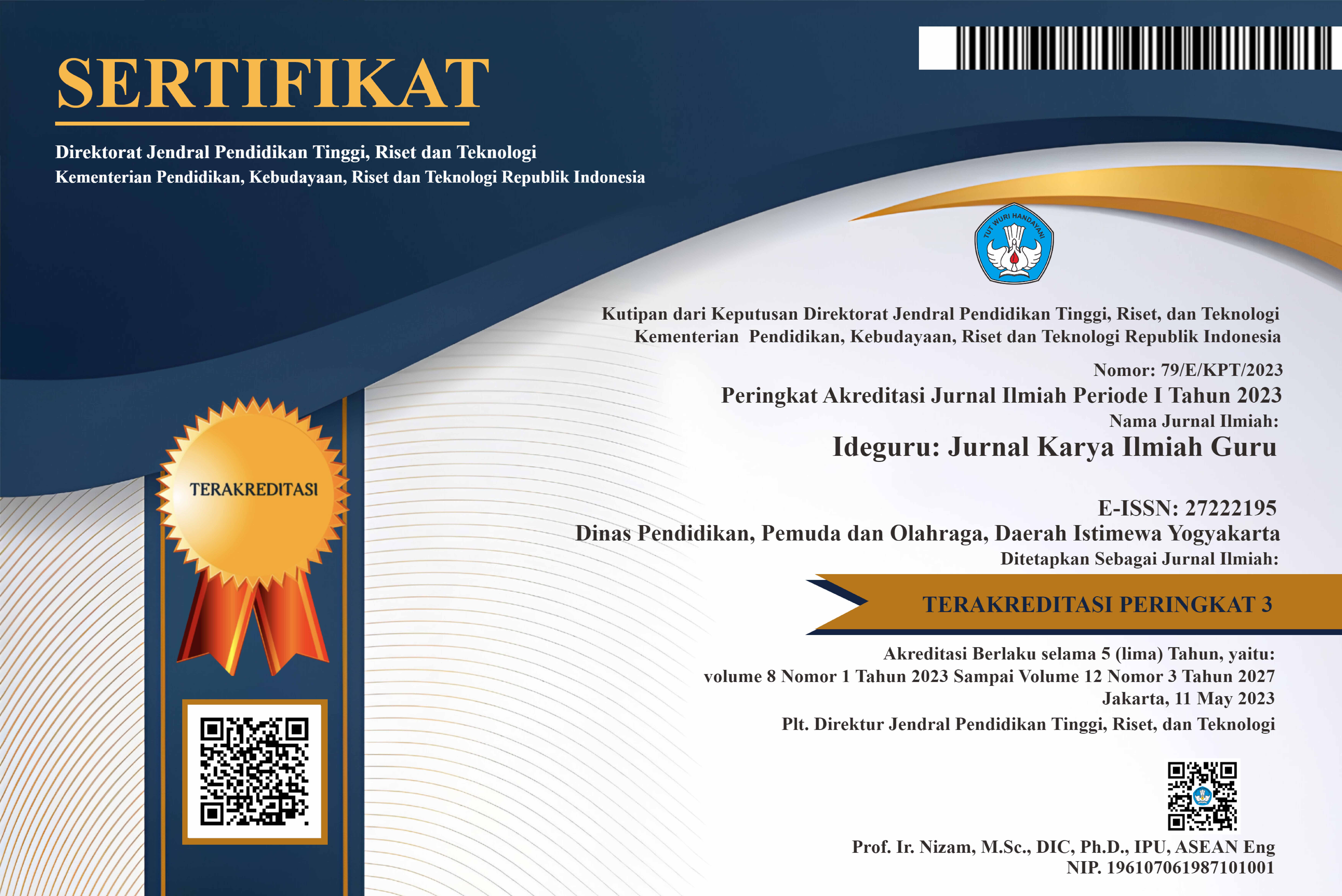Penerapan Two Stay Two Stray (TSTS) untuk Meningkatkan Prestasi Belajar Materi Keseimbangan Pasar
Abstract
The aim of this research is to see the implementation of the Two Stay Two Stray (TSTS) learning pattern in improving the learning performance of market balance materials in students of grade X.4 in State High School 1 Bambanglipuro academic year 2022/2023. And to recognize the activity of teachers in the process of teaching-learning activities that implement the TSTS pattern in improving the learning performance of market balance materials in students of class X.4 in State High School 1 Bambanglipuro academic year 2022/2023. The study was an action study of Kemmys McTaggart’s model class and was carried out in two cycles. The principle of this model is the provision of action in a gradual and continuous cycle of four stages, namely: a) planning; b) action; c) observation; d) reflection. Data collection tools include class observations, learning performance tests, and document excavation. Observation is done at every stage. The results of this research show that the implementation of TSTS learning patterns can improve student learning performance. The increase in learning performance was recorded in the first cycle there were 17 students (53.12%) with a value ≥75 or already meeting the KKM and in the second cycle, there were 27 students (84.38%) with a value of ≥ 75 or already fulfilling KKM, so the rise in learning intensity by 31.26% and the increase in the rate of learning performance of the First cycle to the Second cycle by 15.63 is from the rated value of 63.75 in the First Cycle changes the rational value of 79.38 in the Second Cycle. Student activity results also increased: in the first cycle only the category “sufficient” and in the second cycle changed to “very good”.
PDF Downloads
Copyright (c) 2023 Wardayadi Wardayadi

This work is licensed under a Creative Commons Attribution 4.0 International License.

 DOI:
DOI:














